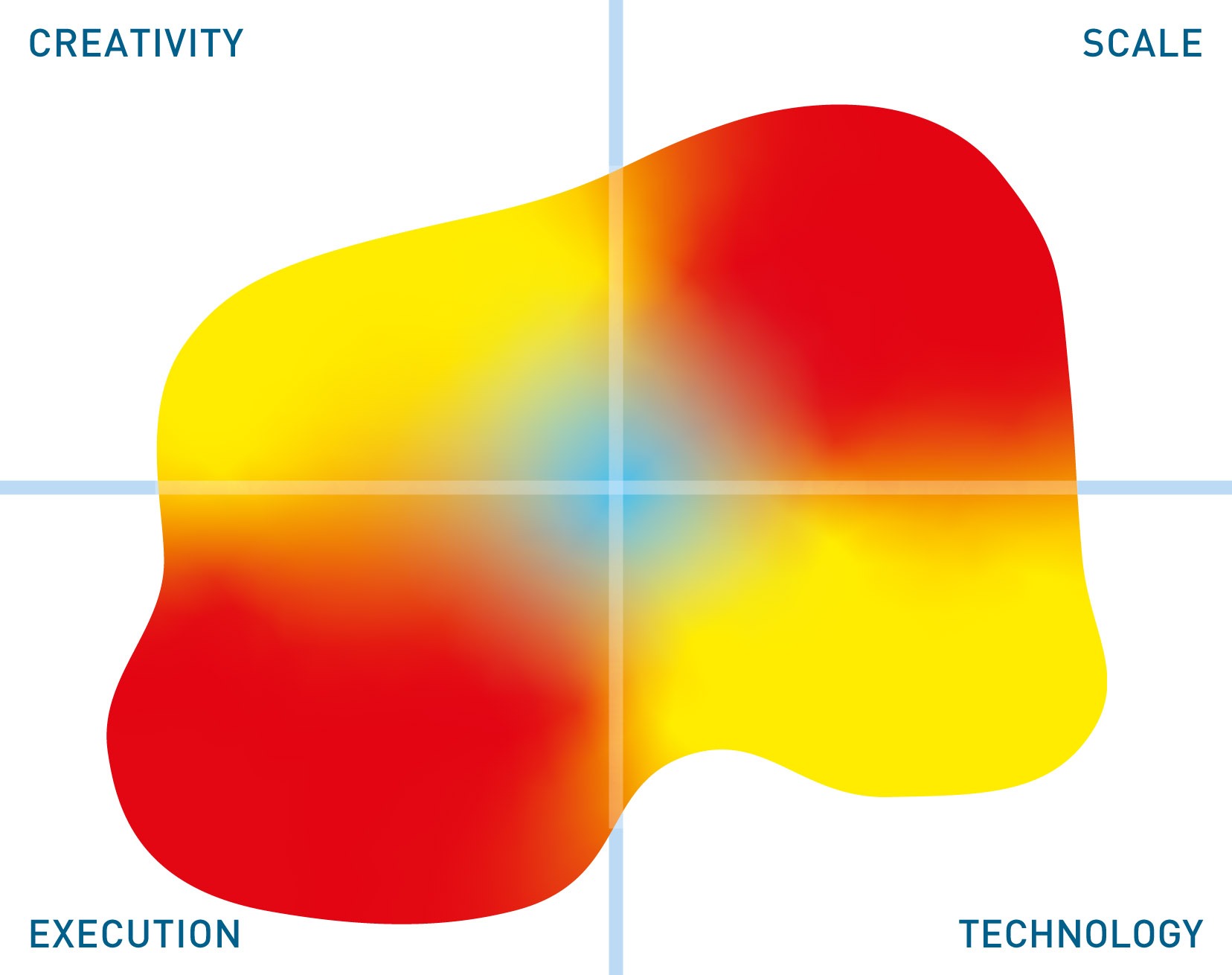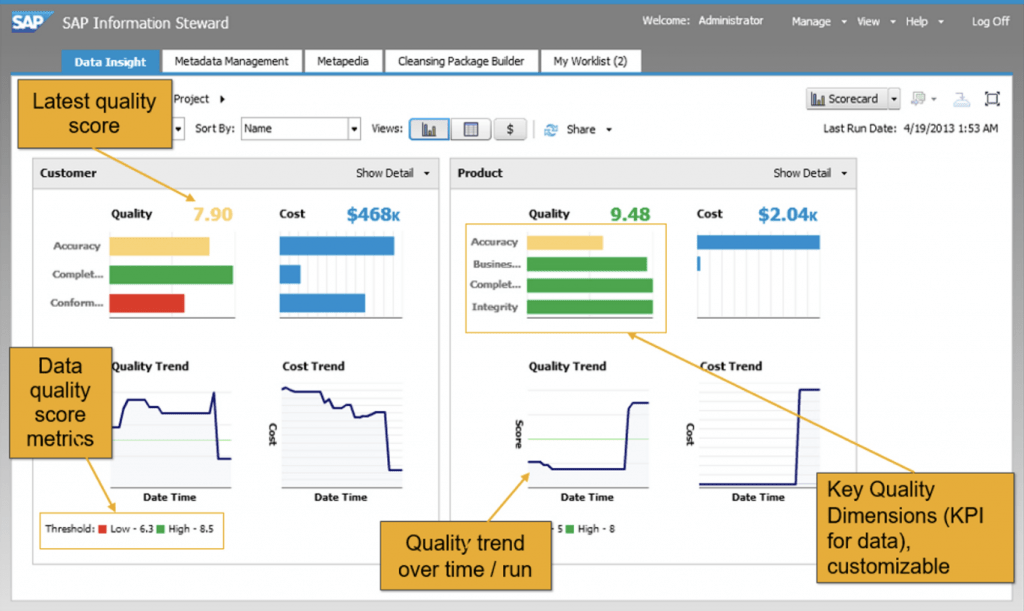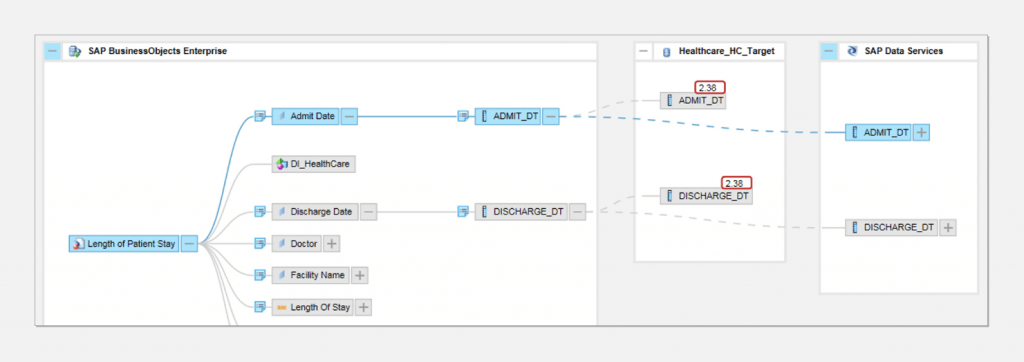SAP Information Steward
Update solution on July 20, 2020

What is it?
SAP Information Steward, assisted by integration with SAP Data Services, is an enterprise-ready data governance solution that brings together a wide variety of governance and governance-adjacent capabilities, such as data quality, data cataloguing, data stewardship, data profiling, data discovery, data cleansing, policy management, data lineage, and impact analysis within a single, unified platform that spans your entire organisation. It aims to help you understand, centrally govern, and ultimately establish trust in all of your data, then enable you to leverage that understanding and trust to achieve desirable business outcomes.
Customer Quotes
“Great solution that works with the organization to deliver quality outcomes.”
Large Manufacturing Company
“With SAP Data Services and SAP Information Steward, we’ve slashed response times to issues and seen customer satisfaction levels rise as a result.”
Leading Australian Electricity Distributor
What does it do?
SAP Information Steward contains a breadth of capability. Among the most integral is its enterprise data catalogue, which provides a central location in which to govern your various data assets. These assets can be collected from a variety of sources using “metadata integrators”. Native integrators are provided for several SAP products, relational databases, and modelling tools, and a variety of other integrators are also available. Once your assets have been ingested into the product, SAP’s Metadata Explorer provides browser-based access to view and edit them. Some detail is provided within each asset view, including data quality and profiling results, any associated rules, business terms, or informational policies, and links to the underlying, physical data. You can also add annotations to your assets, which effectively act as comments. Search access to your assets is provided, as are data profiling capabilities, which are separated into point-and-click “column analysis”, which provides field-level statistical information, and semantic content type profiling, which categorises your assets into content types, effectively acting as data discovery.
Another important capability is the Metapedia. This acts as a central location for defining, managing and implementing your business terms and policies. They can also be associated with your other assets (including other terms and policies). As with the data catalogue, search access is provided. Policies can also be time limited, and may be grouped into policy sets. Your organisation is scored against each policy (and each policy set) based on compliance with the data quality and validation rules associated with it. There is also an acceptability threshold for your policies that you can use to trigger actions if any policy score falls too low. You can import or export your terms using a spreadsheet, and you can access both your policies and your terms from outside SAP Information Steward via an API.

Fig 01 – Data quality scorecard in SAP Information Steward
Your validation rules themselves can be generated automatically from your data profiling results and can then be refined – or created from scratch – in the provided rules editor. Rule checking and alerting are both automated, and you can also view a selection of recommended rules via the Data Quality Advisor, which will assess the state of your system and suggest rules that might improve it. You can then fine tune these suggested rules and either accept or reject them. You can also view your existing and proposed rules in a somewhat more technical context using the Data Validation Advisor. The results of these rules are presented visually within your ‘data quality scorecard’, as seen in Figure 1. An additional, more data-centric results view is also provided. You can also share your rules with SAP Data Services, thereby integrating it with SAP Information Steward and providing the latter with advanced data quality capabilities, as well as enabling collaboration between your business and technical users.

Fig 02 – Data lineage in SAP Information Steward
Your data quality scorecard also includes data quality monitoring and financial impact analysis, the latter in the form of the Business Value Monitor, which puts a numerical, monetary value on how much your data governance and data quality practices are costing you. Moreover, as shown in Figure 2, the product provides visualised data lineage as well as more traditional impact analysis. It also includes the Cleansing Package Builder, which helps you to develop custom data cleansing solutions for any of your data domains – including domains that contain unstructured or semi-structured data – which can then be used to parse and standardise your data within SAP Data Services. Finally, SAP Information Steward offers centralised task management, including approval processes and workflows.
Why should you care?
AP MDG is a natural solution for customers who are committed to the core SAP message of integrated business applications and processes. It has excellent links to the various SAP modules and data models, so it is the obvious place to handle master data that lives within SAP. The new federated deployment capability is important, as master data management initiatives are not always suitable as centrally driven, top-down projects. For many decentralised global companies, it makes sense to manage some data at the local level, e.g. regional or country level, and other data across the enterprise. This flexible deployment approach will suit many companies to provide a more flexible, modular deployment approach.
The Bottom Line
SAP Master Data Governance is a comprehensive master data solution for SAP and non-SAP data. Its federated deployment capability will make it suitable for many enterprises for whom top-down MDM is unsuitable, and this capability is a genuine competitive advantage.
Related Company
Connect with Us
Ready to Get Started
Learn how Bloor Research can support your organization’s journey toward a smarter, more secure future."
Connect with us Join Our Community
